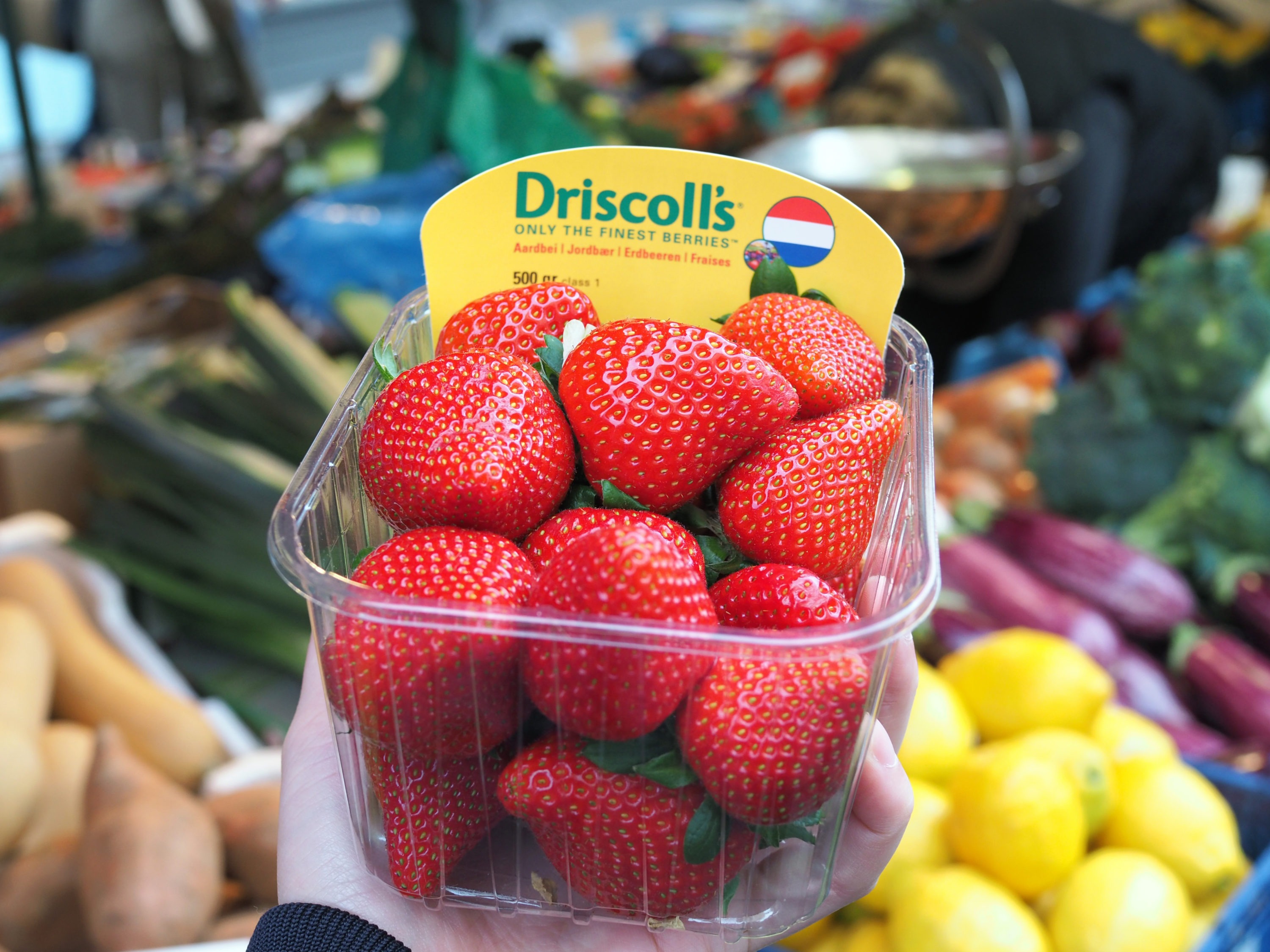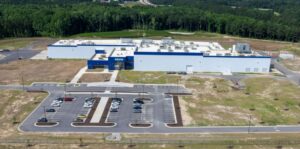As head of R&D strategy and emerging technology at Driscoll’s, Nolan Paul has a unique view of the agtech startups in the specialty crop space.
The global berry seller has become known for its technological innovation in breeding and genetics, but the company’s focus on robotics is less well-known. Paul told AgFunderNews that Driscoll’s wants to support the development of automated strawberry harvest and is in contact with many if not all of the startups working in this area of robotics. That interest has led to investments in Harvest CROO and Agrobot and field trials with more.
Strawberry growing is long overdue for a shake-up and stakeholders know it. Robotic harvesting technologies are not quite ready for wide use. Labor is becoming more scarce as immigration uncertainty in the US continues and also because strawberry picking at ground level is a particularly grueling task. Some growers, inside and out, are raising up growing surfaces to waist-height to mitigate these issues and Driscoll’s is in the position to help and encourage its growers to keep up with the times.
We caught up with Paul ahead of the World Agri-Tech Innovation Summit, where he’ll play the shark in several startup pitch presentations, to discuss how Driscoll’s works with startups and lessons learned while trying to determine the future of strawberry growing.
Driscoll’s is constantly testing and verifying technologies, but can growers afford to make major investments in technology right now?

It depends on what we’re talking about. The startups are recognizing that this is an issue and moving to a service model where you de-risk the technology for the grower base. They’re not going to have to pay a half a million dollars for a piece of equipment. But at some point, we come in. I think it’s not going to be as simple as just the robotics, let’s say, for harvest. It’s a combination of the robotics and the growing system and actually the genetics too. In that combination of all three is where you’ll really see the success. So Driscoll’s will come in, certainly on the breeding, on the genetics side, we’ll optimize for traits like mechanization. But on the growing system too, we’re supporting our growers with that, we help them out. And of course, we’re dedicated to investing in the development of ag technologies on behalf of our growers.
What is your assessment of the harvesting robotics field? Are outdoor growers transitioning to waist-height tables as well as indoor growers? And does that mean that harvesting machinery could work indoors and outdoors?
The good news is that the last couple years have seen a crop of harvesting startups pop up. Honestly, I doubted that would happen so quickly but I’m glad I was wrong. So today Driscoll’s is currently in active conversations with six automated strawberry harvesting startups. And they’re all taking a unique approach, which is great.
The challenges are certainly different. I think when you look at the visioning systems, that will be the same, but the robustness, the durability, and the scale will be different. And I think that’s what we’re seeing — some startups perhaps don’t appreciate the scale that will be required for outdoor farms in the US. If you’re growing in a greenhouse or a glasshouse, you know that’s one thing. But when you need to be out on a 100-acre ranch, those robots, those harvesters need to cover a lot of space and it’s probably not a reasonable thing to assume that you can just have a bunch of these robots going through a field. It’s hard for a grower to manage that. So I think there is a certain fleet size that can only be so big.
I think that’s something we’ve found that perhaps some of the startups haven’t looked at. And I don’t think you’ll just see one winner, I think you’ll see different solutions going into indoor farming whether that’s greenhouse or glasshouse or vertical farm and solutions for outdoors. I think the ones that are successful have the vision to scale from strawberries to other crops and perhaps indoors that’s easier to do. I think that’s a big deal. I’m still skeptical that harvesting robots are going to be successful if you just focus on one crop. And that’s really where we want to work with the startups, to help them understand that narrative, so they’re able to raise VC money.
That’s fascinating coming from you. It seems like Driscoll’s has done a pretty good job of making a big market for strawberry technology.
Yeah, it’s an interesting space. We’ve certainly recognized in the last three years how we engage with startups has to change because there are a lot of people who give them lip service. But what we’ve realized is you have to really be structured the right way. It’s not even about the money — there’s plenty of money. You need people who can work alongside these startups and move at the same speed.
It’s easy to go pitch ideas to a CEO, but to actually execute on them is really tough. And certainly we’re learning and getting better at it. Some of these large companies almost want to own what the startup is doing – to have a competitive edge. A lot of times, unless you’re really big, it just doesn’t work and you almost end up killing the startup.
Why doesn’t it work?
Well I think most of the companies aren’t big enough to justify exclusivity — certainly not in the specialty crop space. It’s a very high, high value space, but we’re fragmented. There are a lot of one to five billion dollar crops in the US across grapes, strawberries, nuts, and vegetables. But in and of itself it’s not big enough for a startup to scale. It’s important for folks to focus. But you have to have the vision of how you’re going to scale. The right strategic corporate can be a good partner for startups. But they need to recognize that, if you’re working with a startup it’s great that you’re an anchor customer, but you want the startup to be around in two, four, six, 10 years. And the only way they’re going to be around in six to 10 years is if they’ve been able to scale up and either be acquired or maybe, they have to create that scale themselves. I think people are too short-term when they interact with startups.




